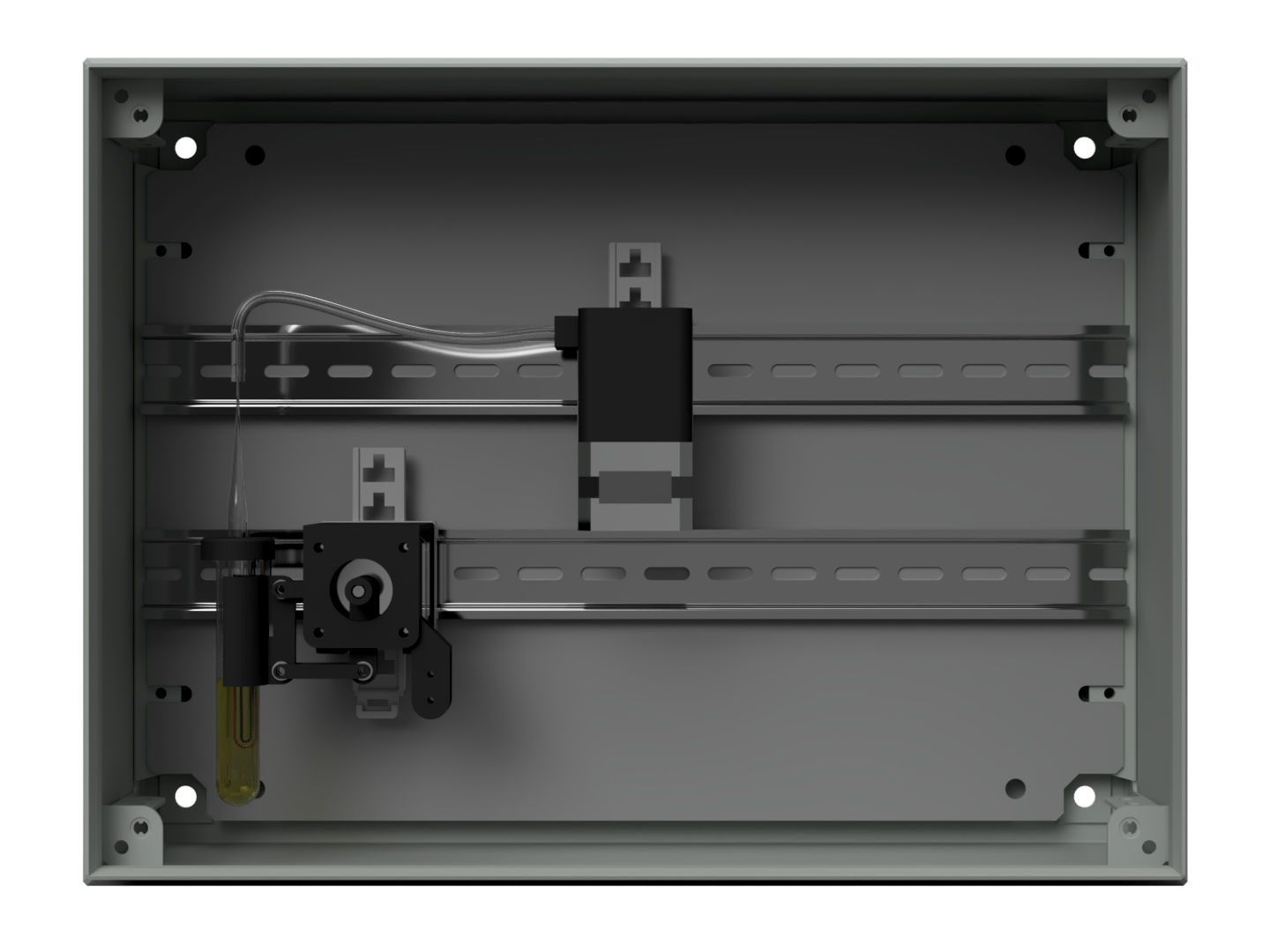Hardware
Hardware Overview
We nominated ourselves for the best hardware prize of iGEM 2018!!!
As our home page suggests, we are going for the hardware prize! We designed and built so much over the months, and we would like to share all that with you. Check out our amazing hardware!

Environment control
To get a reliable carbon monoxide sensor, we need to keep the environment of the bacteria stable. This way the only variable that controls the output is the amount of carbon monoxide.
Temperature controller
To control the temperature of the bacteria, we made a temperature controller based on a Peltier element. It
can move 150 watts of thermal energy, making it powerful enough to freeze or boil a small volume of water (e.g.
1 mL) in a matter of seconds.
Because it’s so powerful, we can use our controller in a wide range of environments where constant heating or
cooling is required to guarantee proper operation.
Test tube shaker
Another problem we had was that the bacteria would pile up on the bottom of a test tube, inhibiting their operation. To prevent this from happening, we designed and 3d printed a device to shake the test tube. This device is able to shake the tube at a variety of speeds and can either shake continuously or periodically when required.
More details about the test tube shakerGas measurement
To measure the amount of gas produced, we capture the gas in a pipette that has been placed upside down. In this
pipette we measure the fluid level at two different points. When the pipette fills up with gas to the lower
measurement point, we use a peristaltic pump to dispose it until we reach our upper measurement point. By
measuring the time it takes the pipette to fill with gas, we can determine the rate of gas production.
For a fast response to gas production, the measurement points can be placed close together (e.g. 1 mm apart)
to get a quick and accurate measurement of the gas production.
Fluid level detection
To detect if there is fluid or gas at a specific level in the pipette, we use the conductive property of non-distilled water. Because water is a conductor, albeit a poor conductor, and gas is an isolator. Using this property, we can detect if there is an electrical connection between a measurement probe in the pipette, and a reference probe that has been inserted into the medium.
To detect if there is an electrical connection, we use a field effect transistor (FET). This is a special type of transistor that unlike ‘regular’ bipolar junction transistors (BJT) don’t require an electrical current to switch on, but just a small voltage. Because of this property, it doesn’t matter that the water has a very high resistance, as there is virtually no current flowing.
Peristaltic pump
To accurately pump the gas out of the pipette, a crucial part to making the measurement automated, we designed and 3d printed a peristaltic pump. The design uses easily accessible off-the shelf parts in combination with 3d printed parts to create an accessible pump that can easily reach sub microliter accuracy.
To achieve this accuracy, we started with a stepper motor, which can move in steps of 1.8 degrees. This type of motor can be controlled very precisely. With the most common driver chip, the Allegro A4988, which supports 16x 'microstepping'. It can move in steps of 0.1125 degrees. On top of that we built two planetary reduction drives, this is a type of gearbox that is very compact. Each of the reduction drives slows the output of the motor four times, thereby increasing the power and resolution of the motor by four times. After these gearboxes, it can move in steps as little as 0.028125 degrees.
On top of these gearboxes we made the actual peristaltic pump, by making two mating pieces which have a cavity the silicone hose fits trough. A third rotating part compresses the hose at multiple points, creating the peristaltic movement that makes this pump work.
More details about the peristaltic pump